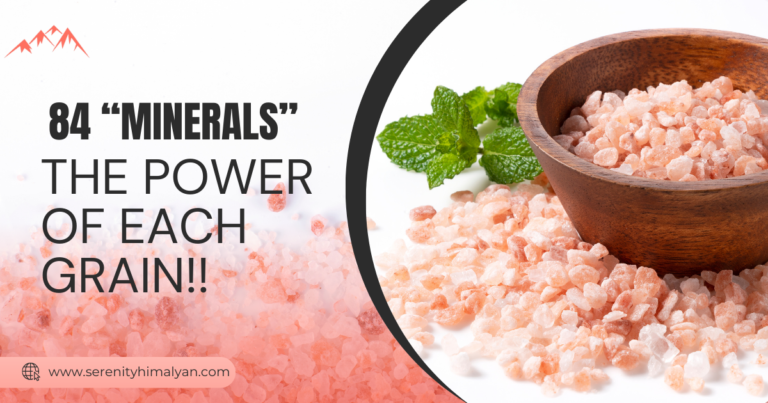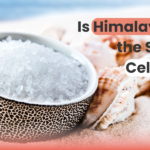Himalayan Pink Salt has gained immense popularity in recent years, not just for its eye-catching color and exotic origin, but also for its purported health benefits. This pink-tinted salt, which comes from ancient sea beds within the Himalayan mountains, is said to contain 84 different minerals and trace elements, contributing to its unique properties. In this article, we’ll delve into the significance of these minerals and why they make Himalayan Pink Salt a subject of interest for health enthusiasts and culinary experts alike.
What Are the 84 Minerals in Himalayan Pink Salt?
To understand the buzz around Himalayan Pink Salt, it’s essential to recognize what it’s made of. Unlike regular table salt which is heavily processed and primarily composed of sodium chloride, Himalayan Pink Salt is minimally processed and retains a plethora of minerals that contribute to its nutritional profile.
Trace Minerals and Their Roles
The 84 minerals found in Himalayan Pink Salt include calcium, magnesium, potassium, copper, and iron, among others. These minerals are present in trace amounts, but they play significant roles in our health. For example, calcium is vital for bone health, magnesium supports muscle and nerve function, and potassium helps balance fluids in the body.
The Impact of Trace Minerals on Health
While the concentration of these minerals in Himalayan Pink Salt is very low, they can still contribute to the overall mineral intake, especially when used consistently over time. The presence of these trace minerals can aid in hydration, electrolyte balance, and may provide antioxidant support.
The Health Benefits of Himalayan Pink Salt
When it comes to the health benefits of Himalayan Pink Salt, opinions vary. However, proponents believe that the rich mineral content can have several positive effects on the body.
- Hydration and Electrolyte Balance
One of the most talked-about benefits of Himalayan Pink Salt is its potential to improve hydration. The trace minerals it contains are said to help maintain proper electrolyte balance, which is crucial for regulating body fluids.
- Detoxification Properties
There’s also a belief that Himalayan Pink Salt can support detoxification. The minerals in the salt may help draw out toxins from the cells and tissues, promoting a cleansing effect on the body.
- Supporting Digestive Health
The salt is also thought to stimulate the production of digestive enzymes, which can enhance nutrient absorption and improve overall digestive health.
- Culinary Uses of Himalayan Pink Salt
Beyond its health implications, Himalayan Pink Salt is also celebrated for its culinary uses. Its unique flavor profile and the subtle differences it can bring to dishes make it a favorite among chefs and home cooks.
- Enhancing Flavor with Minerals
The trace minerals in Himalayan Pink Salt can impart a more complex flavor compared to regular table salt. This can elevate the taste of dishes and provide a gourmet experience.
- Aesthetic Appeal
The distinctive pink hue of the salt can also enhance the visual appeal of meals, making it a popular finishing salt for both savory and sweet dishes.
Comparing Himalayan Pink Salt to Other Salts
With so many different types of salt available, it’s worth comparing Himalayan Pink Salt to its counterparts to understand its unique position.
Table Salt
Regular table salt is highly refined and often contains additives like anti-caking agents. It lacks the broad spectrum of minerals found in Himalayan Pink Salt, which some believe makes it a less healthful option.
Sea Salt
Sea salt is another popular alternative that is less processed than table salt and contains some trace minerals. However, concerns about ocean pollution have led some consumers to prefer Himalayan Pink Salt, which is believed to be more pristine.
Specialty Salts
There are also other specialty salts, like Celtic sea salt or volcanic black salt, each with its own mineral composition and health claims. Himalayan Pink Salt stands out among these for its purported 84 minerals and ancient origin.
Sustainability and Ethical Considerations
The increasing demand for Himalayan Pink Salt raises questions about sustainability and the ethical implications of mining. Responsible sourcing and attention to environmental impact are crucial factors for consumers to consider.
- Mining Impact on the Himalayas
The mining of Himalayan Pink Salt can have environmental consequences on the Himalayan region. It’s important for companies to engage in sustainable practices that minimize damage to the ecosystem.
- Fair Trade and Labor Practices
Ensuring that the salt is harvested under fair labor conditions is another consideration. Supporting brands that adhere to fair trade principles can make a difference in the lives of workers in the salt mines.
Conclusion: The Balance of Benefits and Choices
In conclusion, Himalayan Pink Salt is more than just a kitchen ingredient; it’s a complex mineral resource with a diverse range of uses and potential benefits. Whether it’s for its healthful properties, culinary advantages, or aesthetic appeal, this pink salt has carved out a significant place in the market.
However, as with any product, it’s vital for consumers to weigh the benefits against ethical and environmental considerations. By choosing responsibly-sourced Himalayan Pink Salt and using it in moderation as part of a balanced diet, one can enjoy its qualities while making informed and conscientious choices.
Himalayan Pink Salt may offer more than just seasoning for your food—it could be a small piece of the vast mineral wealth that nature provides, and a reminder of the importance of preserving the natural world while benefiting from its gifts.















6 Responses